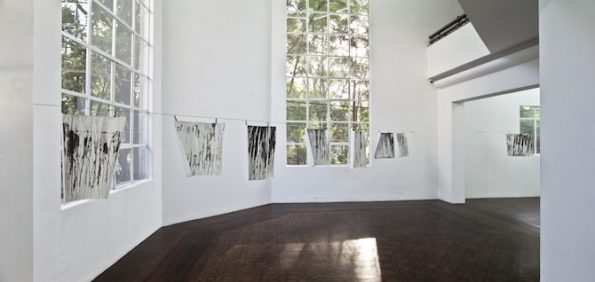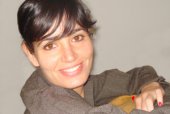Search
To search for an exact match, type the word or phrase you want in quotation marks.
A*DESK has been offering since 2002 contents about criticism and contemporary art. A*DESK has become consolidated thanks to all those who have believed in the project, all those who have followed us, debating, participating and collaborating. Many people have collaborated with A*DESK, and continue to do so. Their efforts, knowledge and belief in the project are what make it grow internationally. At A*DESK we have also generated work for over one hundred professionals in culture, from small collaborations with reviews and classes, to more prolonged and intense collaborations.
At A*DESK we believe in the need for free and universal access to culture and knowledge. We want to carry on being independent, remaining open to more ideas and opinions. If you believe in A*DESK, we need your backing to be able to continue. You can now participate in the project by supporting it. You can choose how much you want to contribute to the project.
You can decide how much you want to bring to the project.

Iñaki Bonillas presents in the Galería OMR in Mexico D.F. his latest project, “La lluvia llegó al final” (The rain came finally) a new incursion into the photographic archive that he inherited from his grandfather, J.R. Plaza, with which the Mexican artist has worked on several occasions. The exhibition reconsiders the limits of the photographic fact and tackles new modes for presenting the material within the gallery space.
The installation by Bonillas reconfigures the architecture of the building of the gallery in a very subtle manner, introducing diagonal lines that burst into the rooms and fracture the spaces. New geometric variables appear that in a certain manner break with the supposedly unidirectional nature of the pathway and the gaze.
It could be the last time that the artist works with the archive of his grandfather, who died in 2000 leaving the family an impressive photographic legacy that even included examples from the end of the 19th century. The death of the grandfather marked an important technical decision: if the photographs already existed, it’s not necessary to produce them. And so began an aesthetic fascination with the archive that passes through various phases and is presented in different spaces, including the Virreina, in the year 2012.
The relation between Iñaki Bonillas and the photographic medium is complex, and some of the years that he spent assisting his uncle, the photographer Carlos Somonte, preparing everything needed for the photograph to happen, but without being directly implied in its execution, situated him at this interstice around which his artistic practice will later revolve. A space of proximity-distance regarding the photographic fact.
In his work, photography is an excuse. An excuse to explore the form, material, space and architecture …the way that objects are presented and become visible. .
One is aware of a constant endeavour to annul the inherent narrative of the photographic image, but the weight given to the archive causes the familiar myth to infiltrate the corners of the image. The connotations of the material are so multiple it becomes difficult for it to pass unnoticed. Through the archive can be traced, the history of photography of the 20th century, the history of a war, the history of an exile…The evocative power of the images is so great, that it enters into tension with the strategy of distancing.
In “La lluvia llegó al final”, Bonillas chooses 36 photographs that have in common the fact of being group photographs. The larger part of them date from the first half of the 20th century. With the passing of the years, the photographs of the group will disappear from the archive, coinciding with the fragmentation of the family as a result of their exile, first to France and then to Mexico.
There exists a “give and take” between the artist and the archive, playing at the frontier where one can take control over the other at any moment. One perceives a constant tension. In previous proposals, Bonillas had already planned different forms of distancing from the archive and its multiple connotations.
In a new intent to get rid of the material, he applies a developing treatment to the images where part of them is lost, bleeds… The bodies fragment, the faces dissolve, the histories are erased. A new stop is placed on the narrative. What really matters is what lies beyond.
There is a twist in this erasure, a procedural line that suddenly deviates from its prefixed future to allow chance to enter. On top of what is covered is projected the focussed image of what can’t be seen. It becomes totally precise, a symbol of what is lacking, defined only through its absence presence.
The proposal of Bonillas opens up multiple routes for critical reflection that compete with the photographic fact, but at the same time transcend them. The election of the exhibition display could, perhaps end up being problematic. It functions architectonically, as an element capable of “modelling” the gallery space. However, it remits too literally to the process of developing and drying, to the photographic laboratory and to photography itself. In this sense, its justification becomes difficult, unless we understand it once again as an operation inscribed in this constant give and take that the artist maintains with photography.

Maite Garbayo is a writer and researcher. Art history, feminist crticial theory and pyschoanalysis are a few of the tools of her trade. She combines her research and writing with periods of teaching. Currently, she is working on her doctoral thesis and is the editor of the magazine {Pipa}.
"A desk is a dangerous place from which to watch the world" (John Le Carré)